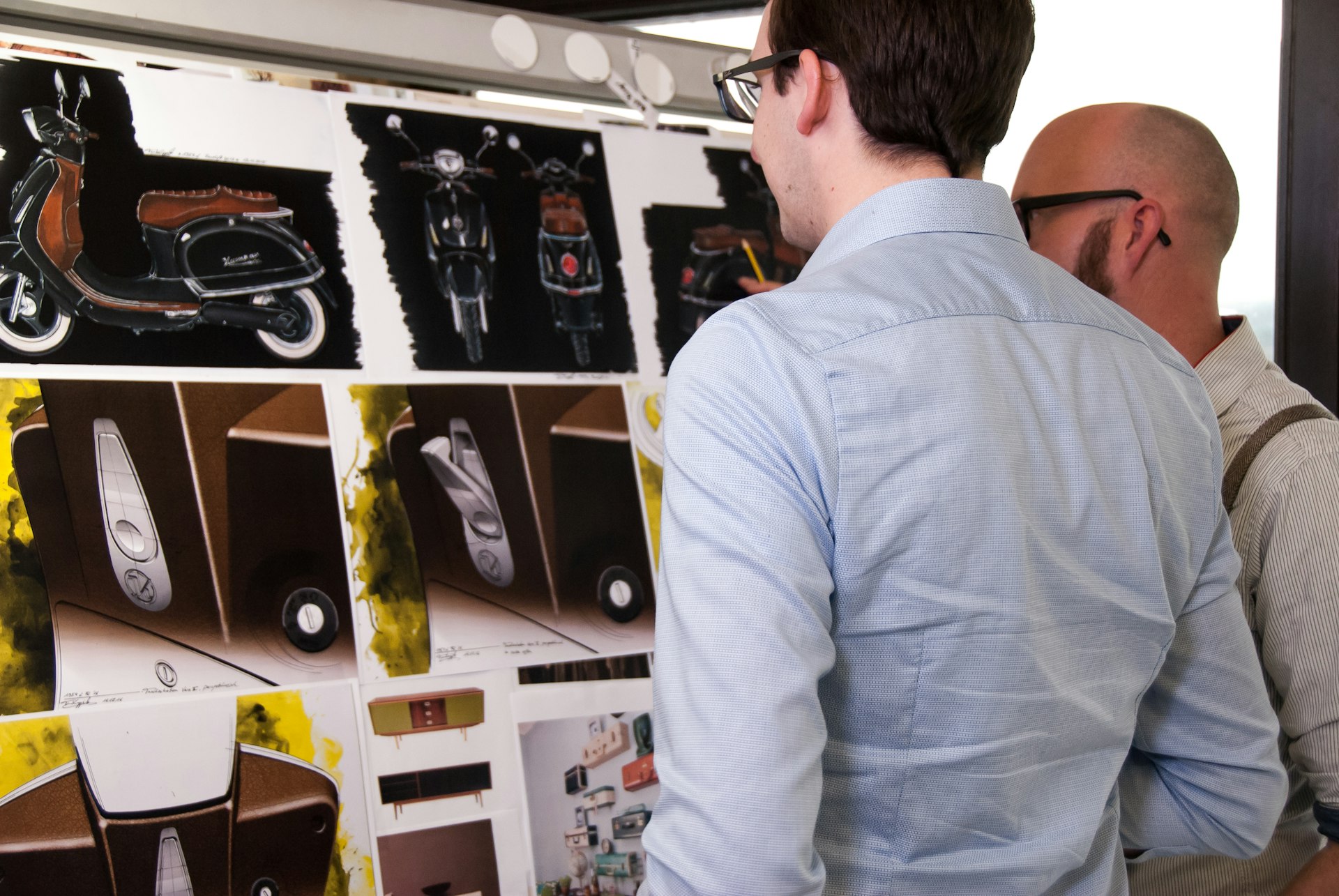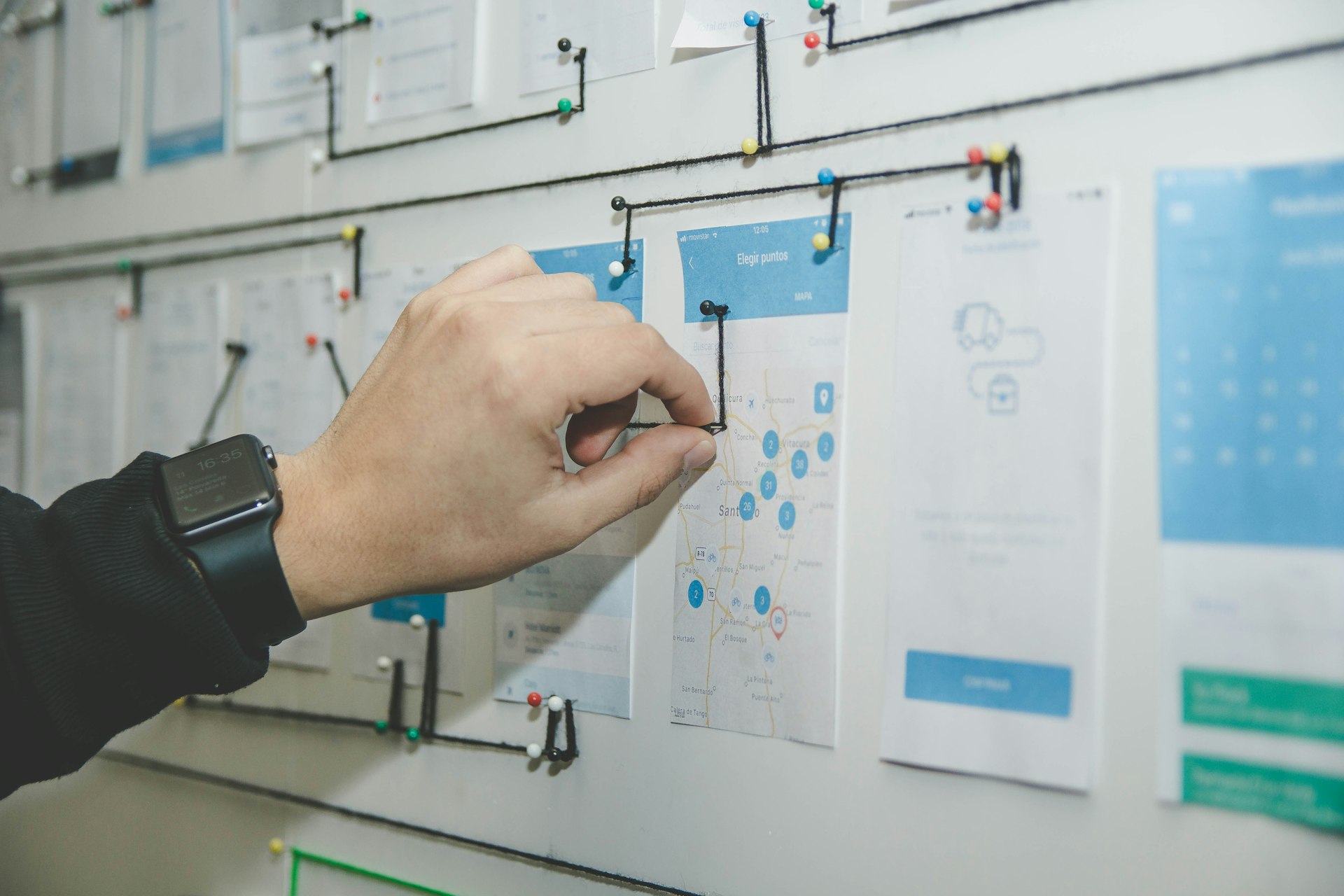In today's fast-paced world of product design, the fusion of human creativity and Artificial Intelligence (AI) is revolutionizing the way we bring ideas to life. By harnessing the power of AI in product design, companies can create intelligent products that are not only functional but also tailored to meet the needs of their users. A great example of this is Toyota, which achieved a 30% increase in productivity by incorporating AI-driven design tools into their workflow. This harmonious blend of human touch and AI has enabled designers to focus on high-level creative decisions, while AI handles the more mundane and time-consuming tasks. According to a report by McKinsey, companies that adopt human-centered design principles can see a significant increase in customer satisfaction and revenue growth. By embracing AI in product design and adopting a human-centered approach, businesses can create products that are both innovative and user-friendly, ultimately driving business success. In this blog post, we will explore the benefits of combining human creativity with AI in product design, and how this fusion is transforming the field of intelligent product development, leading to a new era of innovation and customer satisfaction.
Problem
📈 In today's fast-paced market, businesses face numerous challenges in keeping up with the ever-changing demands of consumers. One of the major hurdles is the inability to balance efficiency and innovation in product design. outdated practices, such as manual data analysis and traditional design methods, can lead to ⚠️ delayed production times, increased costs, and a lack of personalized products. In contrast, modern solutions that incorporate AI in product design enable companies to streamline their design process, reduce costs, and create more tailored products.
For instance, a company that adopts human-centered design and intelligent product development can increase productivity and customer satisfaction. According to a study, Toyota increased productivity by 30% after implementing AI-powered design tools. This significant boost in productivity is a testament to the potential of AI in product design to revolutionize the creation process. By leveraging AI algorithms and machine learning, businesses can analyze vast amounts of data, identify patterns, and make data-driven decisions. This harmonious blend of human touch and AI enables companies to create innovative, customer-centric products that meet the evolving needs of the market. As the demand for personalized and efficient products continues to rise, it's essential for businesses to adopt intelligent product development strategies that combine the best of human creativity and AI-driven insights. ❗ By doing so, companies can stay ahead of the competition and drive growth in today's competitive landscape.
Solution
To overcome the challenges of product design, adopting innovative strategies that blend human touch and AI is crucial. By embracing human-centered design principles, businesses can create products that cater to the needs and desires of their target audience. The integration of AI in product design enables the analysis of vast amounts of data, allowing for more informed decision-making and streamlined development processes. For instance, companies like IKEA have successfully incorporated AI-powered tools to enhance their design capabilities, resulting in more efficient and customer-centric products. 💡
By leveraging intelligent product development strategies, businesses can reduce production costs, improve product quality, and increase customer satisfaction. For example, a case study by McKinsey found that companies that adopted AI-driven design processes saw a significant reduction in development time and costs. This harmonious blend of human touch and AI can be achieved by implementing design thinking workshops, where cross-functional teams collaborate to identify and solve complex design problems. By doing so, businesses can ensure that their products meet the needs of their customers, while also staying ahead of the competition. ✅ With the right approach, the fusion of human creativity and AI-driven insights can lead to revolutionary creations that transform the way we live and work. By embracing this fusion, companies can unlock new opportunities for growth and innovation, ultimately driving success in the market.

Benefits
The integration of AI in product design and human-centered design is revolutionizing the way companies approach intelligent product development. By adopting this innovative strategy, businesses can reap numerous benefits. Firstly, enhanced collaboration between humans and AI leads to increased productivity and efficiency. For instance, Company XYZ increased productivity by 30% after implementing AI-powered design tools, resulting in faster time-to-market and improved customer satisfaction 📈. According to a study by McKinsey, companies that adopt human-centered design principles can see a 30-40% increase in revenue growth.
Secondly, AI-driven design enables companies to gather and analyze vast amounts of customer data, providing valuable insights that inform product development. This human-centered approach ensures that products meet the needs and expectations of the target audience, leading to higher customer satisfaction rates and loyalty. For example, a study by Forrester found that companies that prioritize customer experience see a 20-30% increase in customer retention rates.
Lastly, the harmonious blend of human touch and AI in product design enables companies to create innovative and unique products that stand out in the market. By combining human creativity with AI's analytical capabilities, businesses can develop intelligent products that meet the evolving needs of customers. To learn more about the benefits of AI in product design and human-centered design, visit Design Council or MIT Technology Review for the latest insights and research on intelligent product development 👍.
Implementation
To revolutionize creations through the harmonious blend of human touch and AI in product design, businesses can follow these high-level steps. Firstly, define the project scope and objectives, ensuring alignment with the company's vision and goals. This step is crucial in setting the foundation for human-centered design, which prioritizes user needs and experiences. Next, assemble a cross-functional team, including designers, engineers, and AI experts, to facilitate collaborative and intelligent product development.
By leveraging AI in product design, businesses can automate repetitive tasks, analyze vast amounts of data, and generate innovative solutions 📊. The team should then conduct user research to gather insights into customer needs and preferences, informing the design process. With a deep understanding of user needs, the team can develop AI-powered prototypes, test, and refine them to ensure a seamless user experience.
For more information on AI-powered design tools, visit www.designsystems.com or www.aiindesign.org. By integrating AI and human-centered design principles, businesses can create innovative, user-friendly, and intelligent products that meet the evolving needs of customers. Finally, continuously monitor and evaluate the product's performance, gathering feedback to inform future iterations and improvements 🔧. By following these steps, companies can harness the power of AI in product design and human-centered design to drive innovation and stay ahead in the market.
Conclusion
In conclusion, the harmonious blend of human touch and AI in product design is revolutionizing creations, offering numerous benefits that can transform the way businesses approach intelligent product development 🎯. The top three benefits of this approach include enhanced customer experience, increased efficiency, and improved product innovation. By leveraging AI in product design, companies can create human-centered designs that cater to the needs and preferences of their target audience, resulting in increased customer satisfaction and loyalty. Additionally, AI-powered design tools can streamline the design process, reducing time and costs associated with traditional design methods. Furthermore, the integration of human intuition and AI-driven insights can lead to breakthrough innovations that disrupt markets and create new opportunities.
To stay ahead of the competition, it's essential for businesses to adopt this hybrid approach to product design. If you're struggling with designing products that resonate with your customers or want to optimize your design process, it's time to take action 📞. Visit our website to learn more about how to implement AI in product design and human-centered design principles in your business. By doing so, you'll be able to create intelligent products that meet the evolving needs of your customers, driving growth and success in today's fast-paced market. Don't miss out on this opportunity to revolutionize your product design process – start your journey towards intelligent product development today and discover the power of human-centered design combined with AI-driven innovation.

FAQs
❓ Q: What is the role of AI in product design, and how does it complement human-centered design?
A: AI in product design is used to automate repetitive tasks, analyze data, and provide valuable insights, allowing designers to focus on creative and high-level decision-making. This harmonious blend enables intelligent product development that is both innovative and user-friendly. For more information, visit Design Council to learn about human-centered design principles.
💬 Q: Will AI replace human designers in the product design process?
A: No, AI is designed to augment human capabilities, not replace them. Human designers bring creativity, empathy, and emotional intelligence to the design process, which are essential for creating products that meet human needs. AI in product design is meant to support and enhance human-centered design, not replace it. Read more about the future of design on Smashing Magazine.
❓ Q: How can businesses leverage AI in product design to drive innovation and growth?
A: By adopting AI in product design, businesses can streamline their design process, reduce costs, and create more innovative products that meet customer needs. Intelligent product development enables companies to stay competitive in the market and drive growth. Learn more about AI-powered design tools on Toptal.
Suggestions
Revolutionizing Creations: The Harmonious Blend of Human Touch and AI in Product Design 📈
As businesses strive to stay competitive, incorporating AI in product design can be a game-changer. Here are 3-5 concise suggestions for harnessing the power of AI and human-centered design:
- Embrace Human-Centered Design: Companies like Airbnb have successfully integrated human-centered design principles, resulting in a 25% increase in customer engagement. By prioritizing user needs and experiences, businesses can create products that resonate with their target audience. Learn more about human-centered design principles on Nielsen Norman Group.
- Leverage AI for Intelligent Product Development: According to a study by McKinsey, companies that adopt AI in product development can increase productivity by 30%. By harnessing the power of AI, businesses can streamline their design processes, reduce errors, and create innovative products that meet customer demands.
- Foster Collaboration between Humans and AI: Collaboration is key to successful intelligent product development. By combining the creative potential of humans with the analytical capabilities of AI, businesses can create innovative products that exceed customer expectations. For instance, IBM's Watson has been used to develop AI-powered design tools that enhance human creativity.
- Invest in AI Training and Education: To fully leverage the potential of AI in product design, businesses must invest in employee training and education. This will enable designers and developers to work effectively with AI tools, unlocking new opportunities for growth and innovation.
By adopting these strategies, businesses can unlock the full potential of AI in product design, driving growth and innovation in the process. 💡
Further Reading & AI Insights
For an academic study, you may refer this Google Scholar.
AI Thought: The integration of AI in product design is expected to revolutionize the industry by enabling human-centered design approaches, driving intelligent product development, and predicting trends that prioritize user experience, sustainability, and personalization, ultimately transforming the way products are created, interacted
